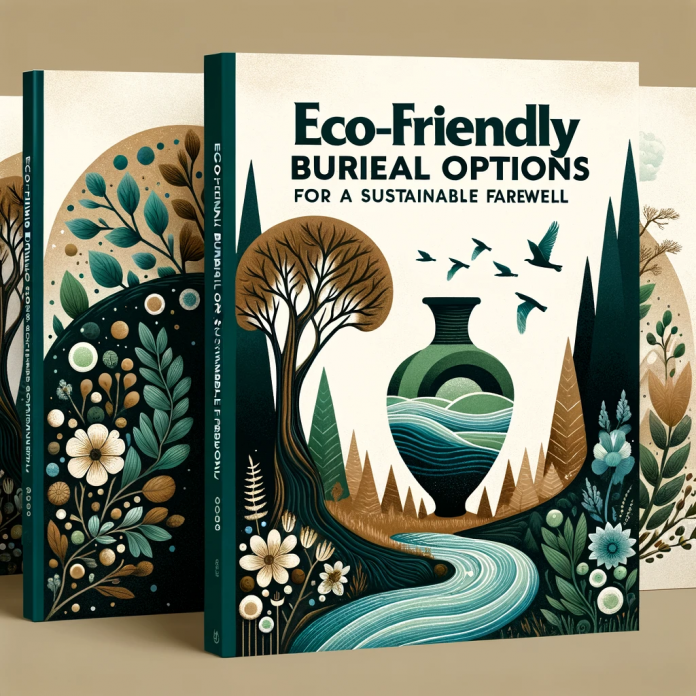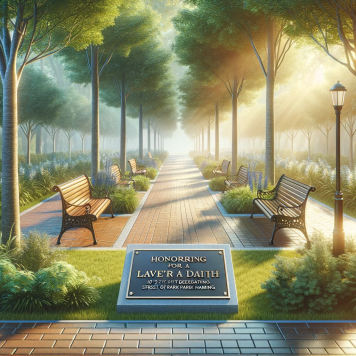As the world becomes more conscious of the environmental impact of our choices, even the way we say goodbye to our loved ones is changing. Eco-friendly burials offer a way to honor the deceased while also respecting the planet. This guide will explore various sustainable burial options, their benefits, and how they contribute to a greener future.
Understanding Eco-Friendly Burials
Eco-friendly burials, also known as green or natural burials, aim to minimize the environmental impact of traditional burial practices. They eliminate the use of non-biodegradable materials and harmful chemicals, promoting a return to nature in the most literal sense.
These burials often take place in designated natural burial grounds or conservation cemeteries, which are maintained as natural habitats. They provide an alternative to conventional cemeteries, where manicured lawns and non-degradable monuments can negatively impact local ecosystems.
The Environmental Impact of Traditional Burials
Traditional burials and cremations have a significant environmental footprint. The process of embalming, for instance, involves the use of formaldehyde, a toxic chemical that can leach into the soil and groundwater. Additionally, caskets made from non-renewable resources such as metal or exotic hardwoods contribute to deforestation and habitat loss.
Cremation, while often seen as a more eco-friendly option than burial, also has its drawbacks. The process releases greenhouse gases into the atmosphere and requires a significant amount of energy. Furthermore, the ashes can alter the pH of the soil, affecting local plant life.
Types of Eco-Friendly Burials
There are several types of eco-friendly burials, each with its own unique benefits and considerations. The following sections will explore these options in more detail.
Natural Burial
Natural burials forgo the use of embalming fluids and non-biodegradable caskets. Instead, the body is placed directly into the ground, often in a biodegradable shroud or a casket made from sustainable materials like bamboo or wicker. This allows the body to decompose naturally, returning nutrients to the soil.
Natural burial grounds are often maintained as wildflower meadows, woodlands, or other natural habitats, providing a serene and beautiful final resting place. They also serve as important wildlife habitats, contributing to local biodiversity.
Tree Burial
Tree burials are a form of natural burial where the deceased's remains nourish a newly planted tree. This can be achieved through a biodegradable urn that contains the ashes and a seed or sapling, or by burying the body in a special pod that facilitates decomposition and tree growth.
This option not only reduces the environmental impact of burial but also creates a living memorial that contributes to reforestation and carbon sequestration.
Water Burial
Water burials, also known as sea burials, involve placing the body or ashes at sea. This requires a biodegradable urn or shroud that will break down over time. Regulations for water burials vary by location, so it's important to check local laws and guidelines.
While water burials have a minimal environmental impact, they also offer a unique and meaningful way to say goodbye. The sea's vastness and tranquility can provide comfort and a sense of connection to the natural world.
Choosing an Eco-Friendly Burial
Choosing an eco-friendly burial is a deeply personal decision that should reflect the values and wishes of the deceased. There are several factors to consider, including cost, location, and personal beliefs.
While eco-friendly burials can be more expensive than traditional options due to the cost of biodegradable materials and natural burial grounds, many people find the environmental benefits worth the extra expense. Additionally, the simplicity and natural beauty of these burials can provide a sense of peace and closure.
Planning for an Eco-Friendly Burial
Planning for an eco-friendly burial involves several steps. First, you'll need to choose the type of burial that best fits your needs and values. Next, you'll need to find a natural burial ground or other suitable location. It's also important to discuss your plans with loved ones and include them in your will or other end-of-life documents.
Many funeral homes now offer eco-friendly options and can help guide you through the process. There are also numerous resources available online, including directories of natural burial grounds and suppliers of eco-friendly burial products.
Conclusion
Eco-friendly burials offer a way to honor the deceased while also respecting the environment. By choosing a sustainable farewell, we can contribute to a greener future and leave a lasting legacy that benefits both the planet and future generations.


-banner.png)





